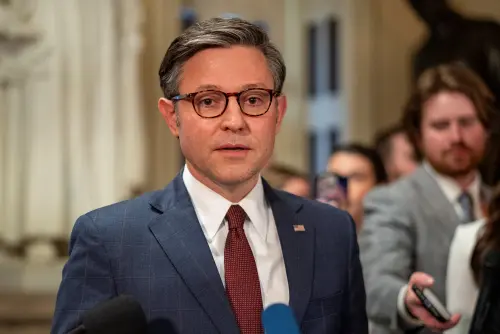Not only has Obama failed to live up to the high expectations he set out at the start of his administration, writes Khaled Elgindy, he is on his way to becoming the first U.S. president in more than four decades to break no new political ground in terms of resolving the Israeli-Palestinian conflict. This piece originally appeared on Foreign Affairs.
U.S. President Barack Obama’s meetings with Israeli Prime Minister Benjamin Netanyahu and Palestinian President Mahmoud Abbas on the sidelines of the United Nations General Assembly in late September renewed speculation about what, if anything, the president would do to advance the goal of Israeli-Palestinian peace before he leaves office. With just four months left in his term, and virtually no chance of resuming negotiations before then, the president is reportedly considering the option of laying out the basic parameters of a final status agreement, perhaps in the form of a U.N. Security Council resolution, as a way to preserve the possibility of a two-state solution under a future U.S. administration.
That Obama is now seen as the last, best hope for a two-state solution is deeply ironic given how little he has done to advance that goal in the nearly eight years since he took office. Not only has he failed to live up to the high expectations he set out at the start of his administration, Obama is on his way to becoming the first U.S. president in more than four decades to break no new political ground in terms of resolving the Israeli-Palestinian conflict. In fact, his legacy could well be the death of the two-state solution itself.
Obama is on his way to becoming the first U.S. president in more than four decades to break no new political ground in terms of resolving the Israeli-Palestinian conflict.
SLOW CHANGE
The first major shift in U.S. policy occurred during the administration of President Richard Nixon, when Secretary of State Henry Kissinger, who had also served under former President Gerald Ford, authorized the first political dialogue with the Palestine Liberation Organization (PLO) in 1973–74. Although short-lived, the secret channel was the earliest sign of U.S. policymakers’ grudging recognition that Palestinians would eventually have to play a role in the peace process. A few years later, President Jimmy Carter stunned both Israeli leaders and the Washington establishment by calling for the creation of a Palestinian “homeland,” the closest any U.S. president had ever come to acknowledging a Palestinian right to self-determination, although he ultimately failed to bring the Palestinians into the Camp David process.
It was Carter’s successor, Ronald Reagan, who first brought the PLO in from the cold. (This was ironic given that Reagan’s secretary of state, Alexander Haig, famously gave the “amber light” for Israel to destroy the PLO during its invasion of Lebanon in 1982.) After years of indirect and clandestine talks with the Palestinian movement, Reagan initiated the first official dialogue with the PLO in 1988. Although President George H. W. Bush later suspended the dialogue following an abortive raid on an Israeli beach by a dissident faction of the PLO, his secretary of state, James Baker, made history at the 1991 Madrid peace conference by bringing Palestinians directly into the peace process for the first time and launching the first face-to-face negotiations between Palestinians and Israelis. Bush was also the first president to link the United States’ substantial aid package to Israel directly to the issue of Israeli settlements by deducting the amount estimated to have been spent on settlement construction in the occupied territories from U.S. loan guarantees to Israel.
President Bill Clinton outdid all of his predecessors. In addition to being the first U.S. president to receive a Palestinian leader at the White House, Clinton was the first to express support, albeit unofficially, for a Palestinian state. He was also the first to lay out a basis for a U.S.Palestinian relationship independent of Israel at the height of the Oslo peace process. Even his successor, George W. Bush, managed to break new ground. In addition to openly supporting Palestinian statehood, thus reversing more than four decades of U.S. policy, Bush created a diplomatic mechanism—the Quartet on the Middle East, consisting of the United States, the European Union, the United Nations, and Russia—to draft a “road map to peace.”
This is not to say that all of these presidents have pursued policies that have benefited Palestinians or advanced the cause of peace, only that each of them found it necessary to break with past U.S. policy in order to advance the peace process—something the current president has thus far been reluctant to do.
NO CHANGE
Indeed, when it comes to Israeli-Palestinian peacemaking, no U.S. president has promised more and accomplished less than Obama. He entered office with a strong start: appointing a special envoy for Middle East peace on his second day in office, calling for an end to Israeli settlement construction, and working to bring the parties back to the negotiating table. But it went downhill from there. After initial U.S.led negotiations ran aground in late 2010, largely over the issue of Israeli settlements, the president effectively walked away from the issue and has scarcely looked back since. Even as Secretary of State John Kerry mounted a valiant but ultimately unsuccessful effort to broker a framework agreement between Israeli and Palestinian leaders in 2013–14, the president noticeably kept his distance.
Meanwhile, for all his talk of “new beginnings,” Obama’s handling of the peace process has remained remarkably faithful to the approach pursued by his predecessor—only with far less effectiveness, given the dramatic changes within Israeli and Palestinian politics as well as across the broader Arab region. As successive Israeli governments headed by Netanyahu have grown more hard-line, the Palestinian leadership has become weaker and more dysfunctional, thanks in large part to the nearly decade-long political division between Abbas’ Palestinian Authority in the West Bank and the Hamas-dominated Gaza Strip. At the same time, given the tremendous upheaval across the Middle East, Arab states such as Egypt, Jordan, and Saudi Arabia no longer have the resources or the political bandwidth to devote to Israeli-Palestinian peacemaking.
Like Bush, Obama has given tacit U.S. support to the continued isolation of the Gaza Strip while opposing attempts at reconciliation between Palestine’s two warring factions, Fatah and Hamas—as though Gaza and Hamas were somehow separate and distinct from the “peace process” or the broader conflict with Israel. Even Obama’s May 2011 declaration that the “borders of Israel and Palestine should be based on the 1967 lines, with mutually agreed swaps,” which the administration billed as a major breakthrough, simply restated an earlier formulation. Using another term for the 1967 lines, Bush had essentially made the same statement in 2005 by saying, “Changes to the 1949 Armistice lines must be mutually agreed to.”
The Obama administration has repeatedly referred to a resolution of the conflict as a “vital national security interest.” Yet its actions seem to suggest otherwise. While the administration decries the status quo as “unsustainable,” it has consistently worked to block attempts to challenge it, even when they are compatible with a two-state solution. Most notably, the administration actively opposed Abbas’ bid to gain recognition of a Palestinian state by the United Nations, which formally admitted Palestine as a “nonmember state” in November 2012.
In contrast, although the administration has harshly criticized Israeli settlements and other practices that threaten the viability of a twostate solution—a source of persistent friction between U.S. and Israeli officials —it has arguably done less to back up those criticisms than previous administrations. In addition to vetoing a draft Security Council resolution criticizing Israeli settlements in January 2011, the Obama administration—as Lara Friedman of Americans for Peace Now, which is part of the Israeli peace movement Shalom Achshav, recently pointed out—is the only U.S. administration in nearly half a century to consistently shield Israel from any type of censure by the Security Council.
“OBAMA PARAMETERS”
With Israeli settlements and the chronic weakness of the Palestinian Authority rapidly foreclosing prospects for a Palestinian state, Obama may yet try to salvage the possibility of a twostate solution, as well as his own legacy, before leaving office. Any 11th-hour intervention by the president would have to be sufficiently bold to overcome the enormous policy deficit and political inertia of the last eight years. Based on some accounts of Kerry’s negotiations, the furthest Obama might go would be to make an explicit reference to a Palestinian capital in Jerusalem, an outcome that was also part of most previous negotiating rounds, including at Camp David in 2000; Taba, Sinai, in 2001; and Annapolis, Maryland, in 2007. Although this could technically be considered a shift in U.S. policy, it may do little in the way of peace, since such parameters might be just enough to antagonize the Israelis but probably not enough to satisfy the Palestinians or prevent further prejudice by Israeli settlements.
A more “radical,” if far less likely, option would be for Obama to join the other 136 countries around the world in recognizing a Palestinian state—thus expanding U.S. policy into previously uncharted territory while sparing his successor from having to pay the political price. (This is what Reagan did by opening a dialogue with the PLO in the final weeks of his administration.) Such a gesture would face intense domestic and congressional opposition, however, and would need to be coordinated with the incoming administration, and neither of the two presidential nominees seems inclined to entertain that option.
On the other hand, given Obama’s penchant for minimalist action, there is a very real possibility that he will do nothing at all. By choosing not to make any declaration on Israeli-Palestinian issues before the end of his term, the president would also be sending a strong message, which is effectively that the United States has given up on a two-state solution. Whatever he chooses to do—or not do—before the end of his term, Obama has significantly lowered the bar for the next administration and could well be the last U.S. president to oversee the possibility of a two-state solution.







Commentary
Obama’s record on Israeli-Palestinian peace: The president’s disquieting silence
October 6, 2016